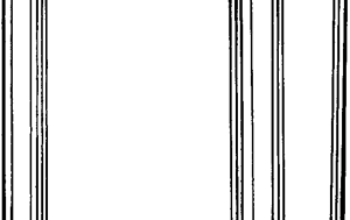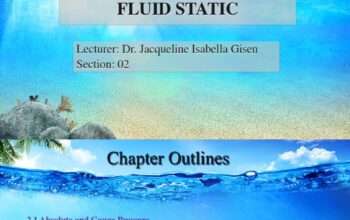The intricate dance between celestial bodies and terrestrial phenomena has long captivated the scientific community, spurring inquiries that target the cryptic mechanisms of our universe. Recently, a tantalizing conjecture has emerged that suggests a potential interrelation between the orbits of satellites and the dynamics of the Earth’s magnetic field. This relationship raises provocative questions, such as: Could the routine orbits of artificial satellites be subtly influencing terrestrial magnetism?
To comprehend this elusive connection, it is essential to comprehend the fundamental properties that delineate both orbits and magnetic fields. An orbit is characterized by the gravitational influence exerted by a celestial body, such as Earth, on a satellite. The balance of forces involved—centripetal force, gravitational force, and any atmospheric drag—dictates the satellite’s trajectory. In contrast, the Earth’s magnetic field, intrinsically tied to the motion of molten iron within its outer core, extends outwards into space and interacts with charged particles from solar winds.
Traditionally, the relationship between satellites and Earth’s magnetic field was largely perceived as a one-way street, with satellites being passive entities that merely traversed the magnetic landscape. However, the emergence of sophisticated research techniques and innovative satellite instrumentation has unveiled the complexity of these interactions. For instance, satellites in low Earth orbit traverse diverse regions of the magnetosphere, encountering varying geomagnetic conditions that can produce significant fluctuations in their operational integrity.
Moreover, satellites equipped with magnetometers have been instrumental in measuring minute alterations within the magnetic field. Analysis of the data yielded by such devices has delineated irregularities and transient fluctuations that defy simple explanations. This suggests that the activity of orbiting satellites might play a role in modulating Earth’s magnetosphere—an intriguing possibility that warrants rigorous scrutiny.
One of the primary mechanisms proposed for this interaction is the environmental impact of satellites on the magnetosphere’s boundaries. As satellites travel through the plasma-rich environment of the ionosphere, they can generate localized disturbances, known as ‘space weather.’ These disturbances result from the interaction of spacecraft ion emissions with the ambient plasma. The byproduct of these disturbances may lead to alterations in the magnetic field configuration around the orbiting body, creating ripples that traverse the magnetosphere.
An additional layer of complexity arises from the sheer number of satellites currently in orbit. As of late 2023, thousands of satellites—both operational and defunct—circumvent the Earth. Each of these satellites engenders unique electromagnetic signatures, contributing cumulatively to the planet’s magnetism. This scenario poses a formidable challenge to scientists: how do these myriad influences culminate in observable phenomena, and could they instigate broader implications for terrestrial climate systems?
Further complicating this investigation is the phenomenon known as the ‘magnetospheric storm.’ These storms, precipitated by intense solar activity, can manifest as profound variations in the Earth’s magnetic field. It raises the contentious question: could orbital satellites inadvertently affect the intensity or frequency of such storms by altering the interaction dynamics between solar winds and the magnetosphere? As solar particles impact the magnetosphere, any deviation induced by satellite activity may provoke unforeseen consequences.
Moreover, there’s the potential impact on communication and navigation systems that rely on the stability of the magnetic field. Satellites have revolutionized global positioning systems (GPS), finance, and communication, yet this newfound information compels us to consider the interplay between their operational efficacy and the oscillations of Earth’s magnetism.
To address these complexities, interdisciplinary collaboration has become paramount. Astrophysicists, atmospheric scientists, and geophysicists must converge to synthesize insights from disparate fields, paving the way for a comprehensive understanding of the interactions at play. It becomes increasingly evident that a multidisciplinary approach can elucidate the nuanced relationship between orbiting satellites and the magnetic field.
In this context, emerging technologies such as machine learning offer promise in deciphering the vast datasets collected by satellites. By employing sophisticated algorithms, researchers can more effectively detect patterns and correlations that may escape traditional analysis. Hence, the intersection of artificial intelligence and space science could unveil previously uncharted territories in understanding Earth’s magnetism.
Ultimately, the notion that satellite orbits might influence Earth’s magnetic field posits a profound paradigm shift in our understanding of planetary science. As researchers grapple with this newfound complexity, they will undoubtedly be confronted with an ethical dimension: how should we navigate the implications of our endeavors in space? With climate change and other terrestrial challenges already posing existential threats, the responsibility lies with the scientific community to approach this nascent understanding with caution and rigor.
In conclusion, the dialogue surrounding the orbital mechanics of satellites and their possible effects on Earth’s magnetism remains in its infancy. Though this connection offers an exhilarating avenue for exploration, it also invites a spectrum of uncertainties and considerations. As we peer into the cosmos, we must remain ever vigilant of the far-reaching repercussions that our aspirations in space may have on our home planet.










